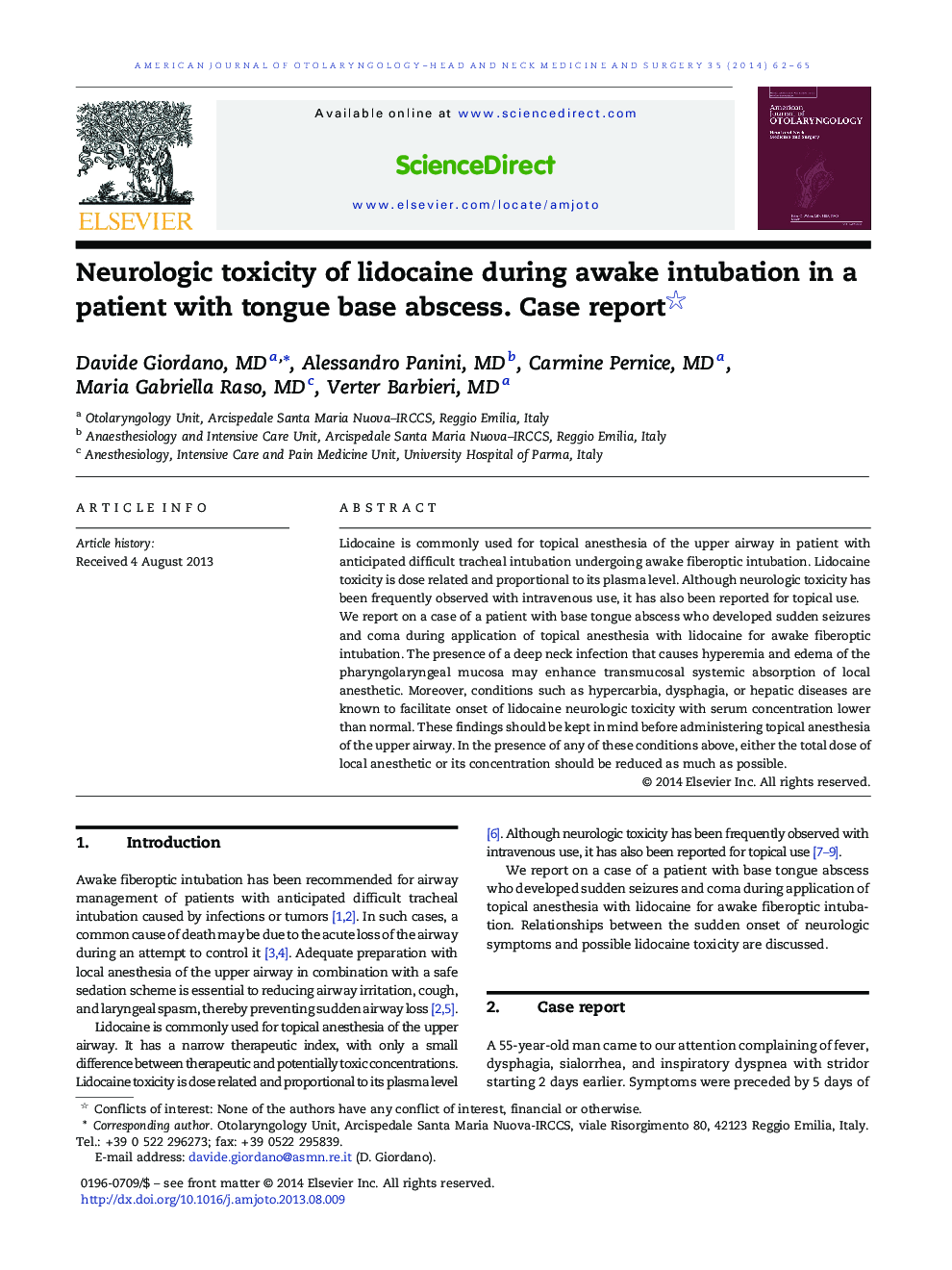| کد مقاله | کد نشریه | سال انتشار | مقاله انگلیسی | نسخه تمام متن |
|---|---|---|---|---|
| 4103701 | 1605245 | 2014 | 4 صفحه PDF | دانلود رایگان |
Lidocaine is commonly used for topical anesthesia of the upper airway in patient with anticipated difficult tracheal intubation undergoing awake fiberoptic intubation. Lidocaine toxicity is dose related and proportional to its plasma level. Although neurologic toxicity has been frequently observed with intravenous use, it has also been reported for topical use.We report on a case of a patient with base tongue abscess who developed sudden seizures and coma during application of topical anesthesia with lidocaine for awake fiberoptic intubation. The presence of a deep neck infection that causes hyperemia and edema of the pharyngolaryngeal mucosa may enhance transmucosal systemic absorption of local anesthetic. Moreover, conditions such as hypercarbia, dysphagia, or hepatic diseases are known to facilitate onset of lidocaine neurologic toxicity with serum concentration lower than normal. These findings should be kept in mind before administering topical anesthesia of the upper airway. In the presence of any of these conditions above, either the total dose of local anesthetic or its concentration should be reduced as much as possible.
Journal: American Journal of Otolaryngology - Volume 35, Issue 1, January–February 2014, Pages 62–65
